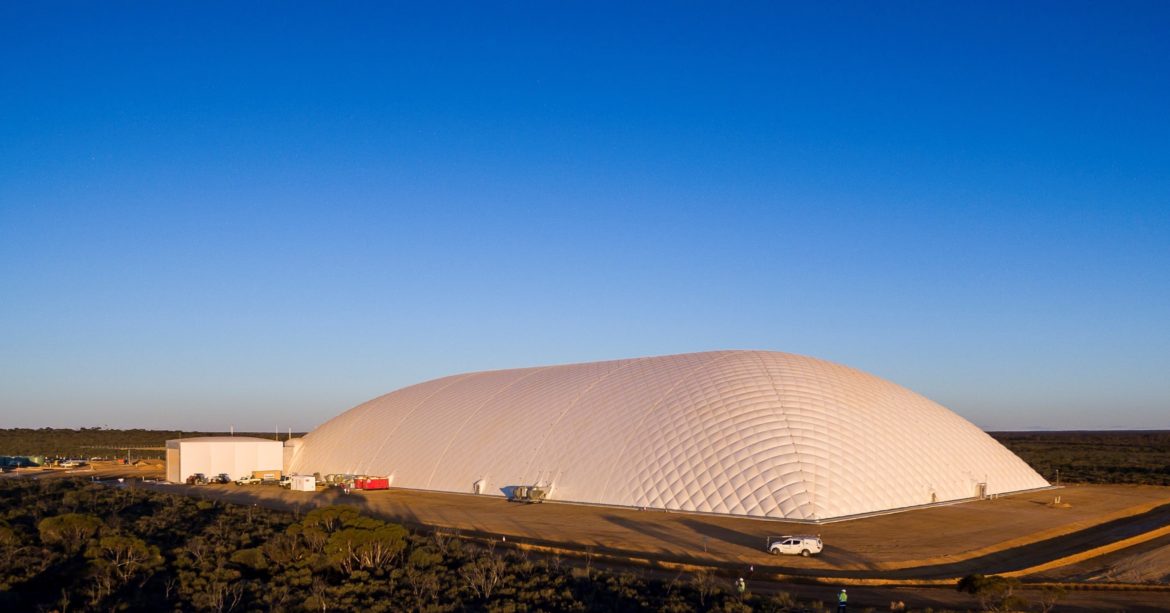Hazardous Waste site is best in class: Tellus
Tellus Holdings says its new purpose-built hazardous waste facility is best in class as the company this month accepted its first delivery of naturally occurring radioactive material at the site.
The Sandy Ridge facility, 240km north-east of Kalgoorlie-Boulder, has been almost a decade in the making and is Australia’s first commercial dual-use geological repository for hazardous waste.
The facility was fully operational by the end of March, with State and Federal government approvals in recent weeks allowing the facility to accept Class 5 waste and low-level naturally occurring radioactive material.
Tellus boss Nate Smith yesterday told the Kalgoorlie Miner the company’s mantra was “to clean up Australia of hazardous waste”.
“The hard truth is that in a mining economy like Western Australia, hazardous waste will exist in our community,” he said.
“It will be produced, it will be transported on roads and so inevitably in this time of ESG (environmental, social and governance) and heightened awareness, it requires a permanent and safe disposal solution.
“Tellus has worked for a decade to develop a world-class solution to this problem.
“That solution ensures new jobs can continue to be created and yet the environment and communities can still be fully protected from any harmful by-products from these developments.”
For Tellus, the impermeable kaolin clay beds at Sandy Ridge present an opportunity for three revenue streams. Open pit mining of kaolin clay results in a low-value bulk-commodity product that can be used in ceramics, paint and fibreglass, among other things.
But the clay is just a by-product of the core revenue stream and the void left by the open-pit mining is used to store the compartmentalised waste before being capped.
The more valuable waste such as metal is recovered and recycled, presenting a third revenue stream.
In the meantime, a giant air dome prevents contamination of the surrounding environment, by ensuring no run-off from rainfall or particles being transferred by the wind.
Mr Smith said a geological repository was essentially a “marriage of leading-edge science and natural protections that really creates a permanent underground vault” to ensure the safe disposal of hazardous waste.
“It’s that it’s extremely dry, there is unbelievably stable ground, it’s far away from people and there’s a thick kaolin clay bed that combine to act like a vault once the waste goes into the cell,” he said.
“This is really unique and it’s because … we’ve pre-funded all of our post-closure costs so that the Government has the funds, it actually has agreed, to monitor our site for 100 years post-closure.
“If Tellus ever ceases to exist, we’ve already established and funded a plan to ensure perpetual and safe solution to that waste.”
Tellus’ development comes as Lynas Rare Earths looks to build a $500 million cracking and leaching plant in Kalgoorlie-Boulder.
That comes with a plan to build a waste disposal facility on Yarri Road for its naturally occurring radioactive material that would be a by-product of the process.
Lynas last week said the Yarri Road site was the preferred location for its off-site permanent by-product storage and was the most suitable of several available sites suggested by the WA Government.
Kalgoorlie Miner
Jason Mennell
21 August 2021
© 2021 West Australian Newspapers Limited
PDF – Hazardous waste site is best in class: Tellus
Web – Hazardous waste site is best in class: Tellus

